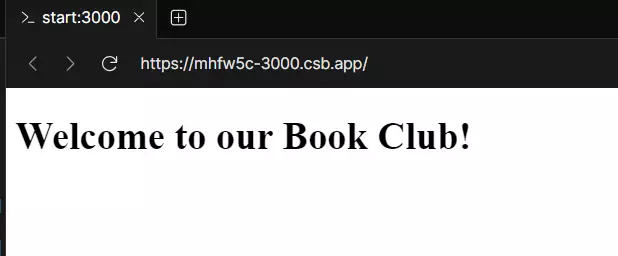
This guide demonstrates building a web server using Node.js and Express.js. We'll cover project setup, server configuration, handling various request types, serving static files, and implementing robust error handling.

Key Concepts:
Part 1: Project Setup
Install Node.js and npm: Download and install Node.js from https://www.php.cn/link/8621cdddd12002436862912970737eda. Verify installation using node -v and npm -v in your terminal.

Project Initialization: Create a project directory, navigate to it, and run npm init -y to generate a package.json file.
Install Express.js: Use npm install express to add Express.js as a dependency.
Part 2: Setting Up the Express Server
Create app.js: Create a file named app.js to house your server code.
Import Express: Add const express = require('express'); at the top of app.js.
Create an Express App: Use const app = express(); to instantiate an Express application.
Define a Route: Define a route using app.get('/', (req, res) => { res.send('Hello World!'); }); to handle requests to the root path.
Start the Server: Start the server on port 3000 with app.listen(3000, () => { console.log('Server listening on port 3000'); });.
Part 3: Enhancing Functionality (Simplified)
This section outlines the key steps; detailed code examples are omitted for brevity.
Message Management: Create a messages.js file to store application messages. Import and use these messages in your routes for cleaner code.
Static File Serving: Create a public directory for static assets (HTML, CSS, JavaScript). Use app.use(express.static('public')); to serve these files.
Handling POST Requests: Install body-parser (npm install body-parser) to handle form submissions. Create a POST route to process form data and store it (e.g., in an array for this example).
Data Storage (Simplified): Use an in-memory array to store data (for demonstration purposes only; a database is recommended for production).
Error Handling: Implement error handling middleware to gracefully manage exceptions.
Serving HTML Pages with EJS: Install EJS (npm install ejs), set it as the view engine (app.set('view engine', 'ejs');), and create EJS templates in a views directory to render dynamic HTML.




Conclusion:
This guide provides a foundation for building web servers with Node.js and Express. Remember to replace the in-memory data storage with a proper database solution for production applications. Further exploration of features like WebSockets and advanced database interactions will enhance your server's capabilities.
The above is the detailed content of How to Build a Simple Web Server with Node.js. For more information, please follow other related articles on the PHP Chinese website!
 Is it difficult to learn Java by yourself?
Is it difficult to learn Java by yourself?
 prtscr key function
prtscr key function
 Priority order of operators in c language
Priority order of operators in c language
 How to set a scheduled shutdown in UOS
How to set a scheduled shutdown in UOS
 The latest ranking of Snapdragon processors
The latest ranking of Snapdragon processors
 Digital currency quantitative trading
Digital currency quantitative trading
 The computer has Internet access but the browser cannot open the web page
The computer has Internet access but the browser cannot open the web page
 The difference between export and export default
The difference between export and export default




